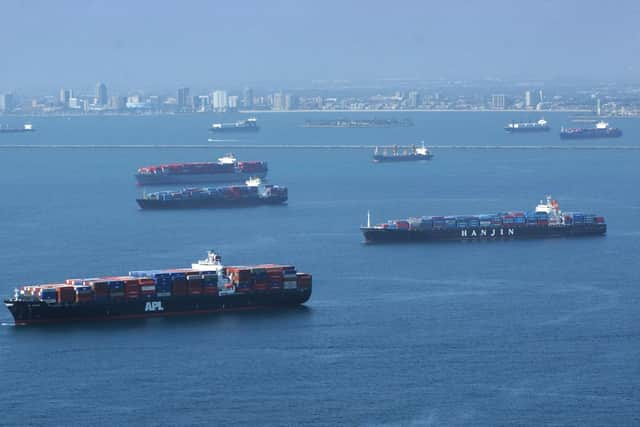Climate change: International shipping's lack of action on cutting emissions will lead to a global transport crisis – Dr Richard Dixon
Sending things by ship is efficient. If we really need container-loads of plastic crap that breaks as soon as you look at it, then sending it on a ship from China is much better than flying it or sending it overland.
The lack of attention to climate impacts is in large part because rules about shipping are negotiated through the International Maritime Organisation. The IMO, a UN organisation with representation from 175 countries, has had little interest in reducing emissions.
Advertisement
Hide AdAdvertisement
Hide AdThe action it has taken so far sees no emissions reductions from global shipping before 2030 and, according to the UN, the plans that do exist fit with a world three degrees warmer rather than the 1.5C limit we are supposed to be aiming for.
The IMO is meeting next year to revise its strategy, but a trajectory even vaguely compliant with the 1.5C temperature limit would need a 34 per cent reduction in emissions by 2030 and zero emissions before 2050. This is a big challenge since a ship built today would usually be expected to still be in active service in the 2040s.
The IMO is feeling some pressure. Governments and industry bodies have been calling for net-zero emissions from shipping by 2050 and Amazon, Ikea and Unilever say they will only use zero-emission shipping from 2040.
Immediate actions which could reduce emissions include: running at slower speeds (your plastic crap might take a week or two longer to arrive), fitting sails to use the wind to reduce fuel consumption; more attention to energy efficiency on board ship; and connections to land-based power for ships in harbour so they are not burning fuel to run generators.


Of course we could also buy less plastic crap and stop crazy things like the previous practice of shipping UK prawns to Thailand so cheap labour can process them before shipping them back to the UK – a 21,000-mile scampi round trip.
In the longer term, new and retrofitted ships need to run on electricity or zero-carbon fuels.
Ships are not just a problem because of their direct carbon dioxide emissions. Ship engines also produce lots of soot. This ‘black carbon’ absorbs heat, adding to climate change, as well as being a health hazard when breathed in. Cruise ships are particularly bad, with three times more black carbon produced than a similarly sized cargo ship.
There are new proposals to extend the UK’s Emission Trading Scheme to include shipping, but this would only cover domestic shipping – that which leaves a UK port and arrives at another UK port.
Advertisement
Hide AdAdvertisement
Hide AdIn this category the biggest polluters are the offshore energy industry, responsible for nearly a quarter of all domestic shipping emissions, bigger than ferries, fishing, oil tankers and other cargo ships.
Action is possible but if the IMO doesn’t get its act together on climate change, future crisis action will need to include mandatory scrapping of the most polluting vessels and restrictions on the transport of goods.
Dr Richard Dixon is an environmental campaigner and consultant
Comments
Want to join the conversation? Please or to comment on this article.
